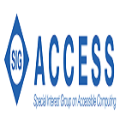Consider two similar drug companies with access to similar chemical libraries and synthesis methods, who each run an R&D program. The programs have the same number of stages, which each take the same amount of time, with the same costs, with the same historic stepwise progression rates, and which aim to address the same therapeutic indication. Now let us suppose one of these companies invests in new scientific tools that make it unusually good at critical progression decisions, while the other company does not. How do we assess the difference in value between the two programs? Surprisingly, standard discounted cash flow valuation methods, such as risk-adjusted net present value (rNPV), ubiquitous in drug industry portfolio management and venture capital, are largely useless in this case. They fail to value the decisions that make drug candidates more or less valuable because rNPV conflates wrong decisions to progress bad candidates with right decisions to progress good ones. The purpose of this paper is to set out a new class of valuation model that logically links the value of therapeutic assets with the value of "decisions tools" that are used to design, optimize, and test those assets. Our model makes clear the interaction between asset value and decision tool value. It also makes clear the downstream consequences of better, or worse, upstream decisions. This new approach may support more effective allocation of R&D capital; helping fund therapeutic assets that are developed using good decision tools, and funding better decision tools to distinguish between good and bad therapeutic assets.
翻译:暂无翻译





